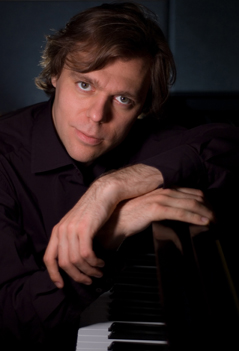Korbinian Altenberger & Andrius Zlabys in Review
Korbinian Altenberger, violin Andrius Zlabys, piano Merkin Concert Hall November 4, 2010Though these two young players have already performed in recital and with major orchestras world-wide, this concert marked their New York recital debut. They hold degrees from some of the most prestigious conservatories, and have won an astonishing number of international prizes, including the one offered by their presenters, Astral Artists.
Their program showed that they are not only excellent players, but also serious, genuine musicians. It consisted of four Beethoven Sonatas: Number 3 in E-flat major, Op.12, No.3; Number 4 in A minor, Op.23; Number 8 in G major, Op.30, No.3; and Number 10 in G major, Op.96. A more challenging calling card can hardly be imagined. Playing Beethoven really well requires as much virtuosity as the most dazzling fireworks, but only as a means for musical ends, not for external effect or to impress the audience.
Altenberger and Zlabys rose to these demands admirably. Their technique was brilliant, but so effortless and unobtrusive that one forgot about it. Altenberger’s tone, though not big, was pure and focused, and he could vary it with bow and vibrato. He seemed intent on preserving Beethoven’s original slurs, which, indicating phrasing rather than bowing, are often too long to be practical; this created problems of balance, especially in the slow movements. The transitions were poised, the phrasing was elegant, the rhythm steady but flexible. Dynamics were carefully observed, but accents, even in many soft passages, were often surprisingly explosive. Tempos were judicious; though both could generate plenty of speed, it was never in order to display their facility.
Of the program’s four Sonatas, the three early ones are youthfully vigorous, exuberant, and brilliant; the late one is among Beethoven’s most intimate, introspective works. The two players had obviously given much thought to these differences in character and found ways to bring them out. In the third Sonata, the writing is far more pianistic than violinistic. The first movement bristles with so many running passages that it has been called the “Zipper” Sonata: after chasing each other in imitation, the two instruments run together in thirds, a risky operation that came off perfectly. The eighth Sonata is another virtuoso piece for both instruments, but the writing is more democratic, requiring even closer teamwork as the instruments trade, take over and build on each other’s melodies. Beethoven is at his most humorous in the Finale, often described as a dance for a Russian bear; the players relished the fun.
In the fourth Sonata, which foreshadows the “Kreutzer” Sonata in its tonality and its drama, the players captured the driving tension of the corner movements and the whimsical charm of the Andante scherzoso.
In his final, tenth Sonata, Beethoven was in full command of the medium and had reached the sublime serenity of his later years. The texture is more transparent and complex, the interplay between the instruments more intricate, the moods more elusive and mercurial. The performers met this test in ensemble playing with sensitive give-and-take, unanimity of expression, and mutual supportiveness.
The recital’s only flaw was the balance between the instruments, though the players went to great pains to accommodate each other. Merkin Hall is well suited to intimate chamber music, but the piano is too big for the moderate space. Unfortunatly, Zablys, though a fine pianist and exemplary partner, kept it wide open, and his first chord in the first Sonata signaled that Altenberger, with his refined, inward style, would have to struggle to be heard. Nevertheless, this was one of the most impressive debuts of recent years.

